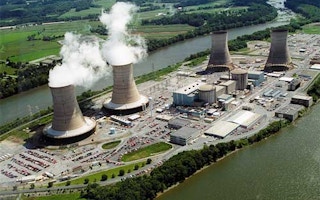The possibility of using nuclear energy here and elsewhere in the region has generated debate, with many raising the specter of nuclear catastrophe. Perhaps it is time to demystify nuclear technology so it can be considered objectively.
Nuclear energy carries the stigma of mushroom clouds and radioactive contamination. But the visions of Chernobyl and Three Mile Island that tend to dominate public discussion are outdated. Nuclear power generation also needs to be distinguished from nuclear weaponry, a link that is historically correct but is often used to rouse negative reactions rather than reasoned consideration.
Other sources of energy – from fossil fuels, water or the sun – come with environmental and human costs as well. Manufacturing solar panels produces toxic tailings which, if not processed properly before disposal, cause ecological damage. Renewable energy sources, such as the sun and wind, need storage systems that require heavy metals to manufacture. The mining and processing of these metals leave an environmental footprint that is seldom discussed.
As for coal mining, recent accidents in China and the United States demonstrate once again its dangers. In addition, coal mining leaves heavy ash residue around mining areas.
The mishaps in the oil and natural gas industries have also received widespread media coverage of late while hydro-power dam projects in India, China and South-east Asia are associated with mass population displacement, damage to precious primary forests and the loss of bio-diversity.
The price we pay for modern energy generation of every kind is steep. Hence, we need to consider all the various options objectively. The energy debate has to be informed by facts, not sentiment.
We need to give top priority to conservation and energy efficiency but given that mankind’s current energy consumption is much greater than that of our agricultural ancestors, all the options have to be explored.
The safety of any nuclear power plants that may be built in South-east Asia has become a cause for concern. There is a view that Asean governments still have a long way to go before they can guarantee a safety culture in nuclear plants.
There is indeed not enough administrative experience to prevent commercial lobbying from weakening efforts to ensure safe reactor operations or adequate provisions when the sites for nuclear plants are chosen.
But these concerns can be opportunities to push for innovation and new business development rather than hinder the development of nuclear technology in the region. Malaysia’s recent decision to construct a reactor has provoked controversy but the debate should lead to a more robust system of checks and balances for nuclear energy operations.
The potential fall-out from nuclear accidents underscores the urgent need for regional collaboration and consultation on this issues. This could prove beneficial as collective bargaining with private-sector suppliers and contractors could dramatically reduce the costs and risks involved in nuclear energy.
Nuclear power plants are no longer as prone to operator and process flaws as they used to be in the past but their detractors hold to past perceptions. Technical failings that allowed for design shortcomings, as in the Chernobyl accident, and for process and operator errors, as in the Three Mile Island case, have been corrected.
Modern control technology has also improved significantly, giving rise to more robust and cost-effective nuclear reactors. Passive core systems that rely on natural forces to cool reactors have been supplemented with other safeguards to prevent the kind of fatal chain of errors that led to Three Mile and Chernobyl.
State-of-the-art light water reactor systems now available are designed to run for 60 years and can extract more energy content out of uranium with 15 per cent less waste. Small modular reactors, with their advanced technology and added safety features, are suitable for areas where it is physically impossible to provide the large buffer zone that traditional nuclear plants need.
A shift is necessary in the debate about the advantages and disadvantages of all types of power generation as Singapore searches for the energy portfolio mix most suitable for its future. Civilian nuclear technology has changed rapidly since the dark days of Chernobyl and renewed regional interest in this form of energy should be cautiously encouraged.
Michael Quah is the Chief Scientist and Principal Fellow at the Energy Studies Institute, NUS. Valerie Choy and Dickson Yeo are Energy Analysts at the Institute.
This article was first published in The Straits Times and reproduced with permission.









